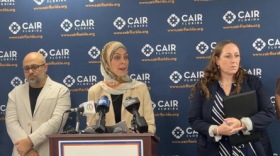A new University of Florida study reveals insights into the secret social lives of the vibrant emerald green orchid bee known as Euglossa dilemma. Among those revelations is the bees’ ability to transition from living alone to cohabiting in small groups.
“This study offers a unique perspective on the evolution of social living in insects,” said Thomas Chouvenc, an associate professor of urban entomology at the Fort Lauderdale Research and Education Center (FLREC), part of the University of Florida Institute of Food and Agricultural Sciences. “Despite a growing understanding of how social behavior evolves and functions in insects, there is still much we don’t know about how insects make the initial transition from living alone to living in small social groups and what the outcomes of this behavior are.”
In the world of pollinators, orchid bees stand out for their brilliant colors, size and physical appearance to the unsuspecting person who comes across them in a garden, park or wildlife area.
These pollinators, essential to many plant and food crops in North, Central and South America, draw interest from growers, gardeners, nature enthusiasts and scientists for their unique social behavior.

As part of the lineage of highly social bees such as honeybees, bumble bees and stingless bees, these powerful pollinators have a talent unique to their relatives – they can live alone or in small groups to reproduce and jointly raise offspring. That is a rarity among bees, adding a layer of mystery to the insect kingdom scientists seek to learn.
“Recent observation of Euglossa dilemma revealed that occasionally social groups will grow to four or five individuals, instead of the usual two or three,” said Nicholas Saleh, first author and a postdoctoral researcher at the time of the study in Chouvenc’s lab at the FLREC. “This observation is especially intriguing, as it is not known why orchid bees have continued to live in small social groups while their highly social relatives have developed large, complex, social groups."
Orchid bees usually form small social groups consisting of a dominant "queen-like" individual and one or two "worker-like" subordinates, typically daughters of the dominant bee. Unlike their highly social relatives, the sharing of labor and raising of offspring in these groups is behavior-based.
“This contrasts with the division of labor in honey bees, in which a queen is the only individual that lays eggs, while the workers physiologically cannot lay eggs,” said Chouvenc, who served as scientific advisor to a National Geographic series called Queens.
The episode was inspired by Saleh’s previous study conducted at FLREC that researched how genes of the same orchid bees change as they shift from solitary to social behaviors.
For this latest study, Saleh recorded and observed approximately 1,000 days of behavior of the Euglossa dilemma social groups. He compared social and reproductive behaviors between “small” groups of two to three bees and “large” groups of four to five bees. While the difference between three and four may seem negligible, scientists considerate significant for this species.

In the “large” social groups, researchers identified conflicts and reproduction inefficiencies relative to “small” social groups, with the “large” groups often having an additional bee competing for the dominant role in the nest.
“This led to higher rates of egg eating and slower reproduction in the ‘large’ social groups,” said Saleh. “This also seemed to introduce confusion into the nest, with dominant bees repeatedly eating and replacing their own eggs.”
The researchers suggest that the inefficiencies and conflicts observed in larger nests might limit the size of orchid bee groups. In contrast, dominant bees in larger groups struggle to maintain control and manage egg laying as effectively as those in smaller groups for the species.
“A question that arose from this work is whether these small orchid bee social groups and the challenges they face are similar to those initially faced by ancestors of bees like the honeybee, which ultimately developed large social groups,” said Saleh. “While we can’t look back in time, this work may begin to shed light on the processes that have shaped the social biology of some of the most well-known and important bee species.”
ABOUT UF/IFASThe mission of the University of Florida Institute of Food and Agricultural Sciences (UF/IFAS) is to develop knowledge relevant to agricultural, human and natural resources and to make that knowledge available to sustain and enhance the quality of human life. With more than a dozen research facilities, 67 county Extension offices, and award-winning students and faculty in the UF College of Agricultural and Life Sciences, UF/IFAS brings science-based solutions to the state’s agricultural and natural resources industries, and all Florida residents. ifas.ufl.edu | @UF_IFAS







